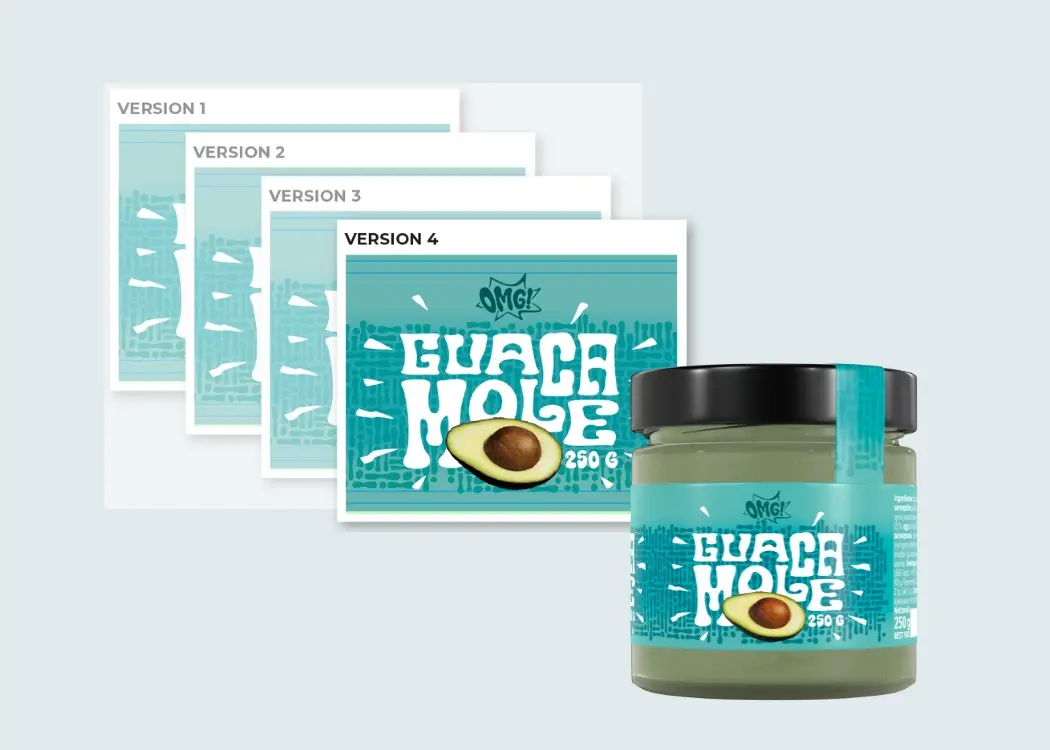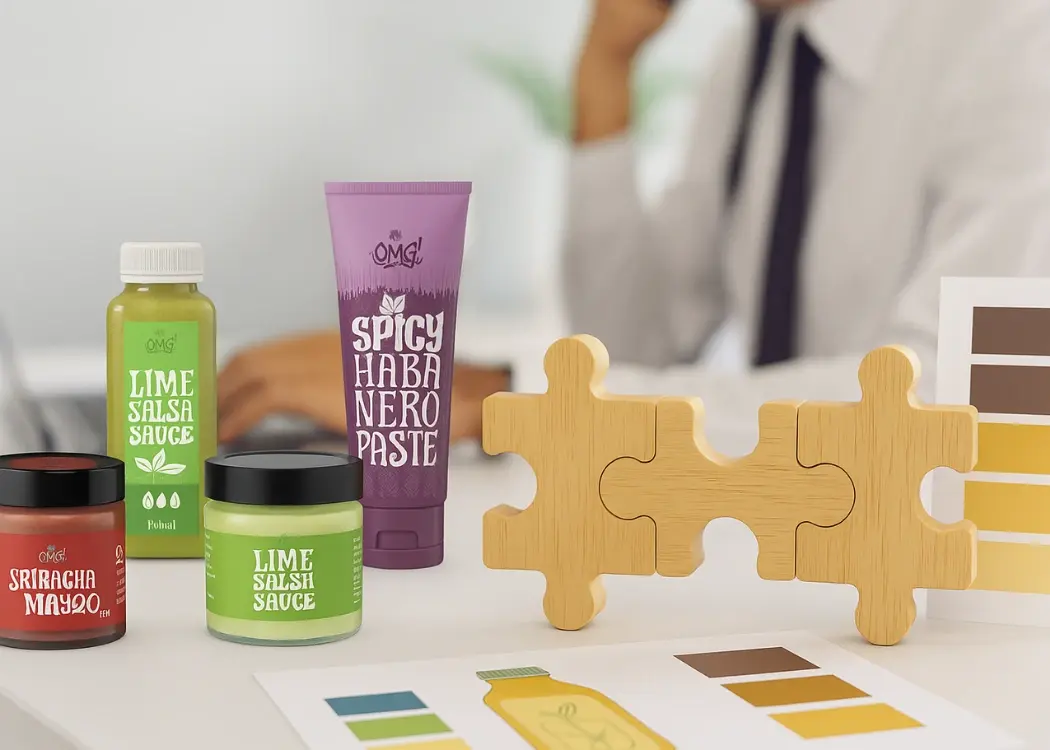Strategic, tactical, operational: managing packaging design
In the race to capture consumer attention, packaging can make or break a product. Yet, managing packaging design isn't as straightforward as briefing...
4 min read
 Ekaterina Skalatskaia
:
June 9, 2025 at 8:15 AM
Ekaterina Skalatskaia
:
June 9, 2025 at 8:15 AM

As creative teams expand, product lines diversify, and compliance requirements tighten, managing design assets has never been more complex. Artwork errors and version confusion aren’t just minor hiccups — they’re costly liabilities. A staggering 43% of product recalls are caused by labeling errors, costing companies millions in lost revenue and brand trust.
Without an efficient version control system, teams drown in a sea of files labeled "final_FINAL_v2" and lose precious time chasing the latest versions. In today’s landscape, version control isn’t optional — it’s essential for survival.
At its core, version control is the systematic management of changes to digital files. While traditionally used in software development, it has become indispensable in creative operations — from graphic design and packaging artwork to UI/UX projects and marketing assets.
Unlike simple backups, design version control:
Records every iteration and comment.
Facilitates seamless collaboration across teams.
Tracks every decision and approval in a secure, accessible environment.
Allows easy rollback to previous versions without confusion.
Think of it as a time machine for your creative process, ensuring no brilliant idea or critical feedback is ever lost.
With over 20 years of experience partnering with leading European brands, our experts are ready to help. Book a free consultation to uncover bottlenecks and streamline your design workflows.
Behind every efficient version control process are a few critical building blocks. Let’s break them down:
A centralized system stores all project files and metadata in one place. Whether it's a DAM (Digital Asset Management) platform or a custom solution, this repository acts as the single source of truth for all design assets. Distributed systems, where each team member has a full copy, can add resilience but require smart synchronization.
Every change — big or small — should be logged with:
Who made the change.
When it was made.
Why it was made (with descriptive comments).
This allows teams to trace back any edits and understand the evolution of a project.
Inspired by software development, creative version control systems allow “branching”:
Multiple versions of a design can be developed simultaneously.
Teams can experiment with color schemes, typography, or layouts without disturbing the main project.
Branches can be merged once finalized, ensuring creative freedom without the chaos.
In a collaborative environment, conflicts arise when two contributors make changes to the same element. Modern version control tools offer intelligent conflict management, allowing teams to compare changes side-by-side and resolve discrepancies efficiently.
Unlike code, design work is visual. Tools like Cway offer visual diff tools that highlight changes between versions — saving hours otherwise spent manually comparing files.
To maintain the integrity of the creative work, it’s crucial to define who can view, edit, approve, or publish assets. Permission management ensures that only authorized users can make critical changes, thus reducing errors and maintaining compliance.
See how Cway revolutionizes packaging design management. Schedule a free demo to streamline your approval workflows and accelerate your time to market.
Imagine coordinating a product launch involving multiple packaging SKUs, global teams, and stringent compliance requirements — all managed through scattered email chains and local desktop folders. Sound risky? It is.
Industry research paints a sobering picture:
60% of brands admit to struggling with version control during artwork development (Veeva Systems).
Packaging errors cost brands millions annually in recalls and reprints.
30–40% of project timelines are lost due to miscommunication and inefficient handovers (IDC).
Even worse, Accenture estimates that companies forfeit an average of €1.5 million per year in lost market opportunities because of launch delays — delays often rooted in the slow, error-prone approval processes of artwork management.
Without version control, teams risk reviewing outdated files, approving the wrong versions, or duplicating work — all leading to expensive setbacks just when speed matters most.
Here’s how a proper version control system transforms creative workflows:
A centralized DAM system houses all design files and tracks every change. This ensures:
No more hunting through emails or shared drives.
Immediate access to the latest approved version for all stakeholders.
Consistent labeling, branding, and compliance across regions.
Platforms like Cway make feedback intuitive by:
Allowing side-by-side version comparison.
Annotating designs directly.
Logging comments linked to specific versions.
This reduces revision rounds by up to 30% and keeps all discussions transparent and traceable.
For industries like food, pharma, and cosmetics, strict regulations require rigorous approval trails. Version control systems:
Maintain an audit history of who changed what and when.
Simplify document retrieval for inspections.
Prevent unauthorized edits with permission controls.
Integrated workflows tied to version control can cut compliance approval times by up to 40%.
Creative teams no longer fear losing work. Branching strategies allow:
Experimenting with variations without impacting the main file.
Swiftly merging the best ideas into the final version.
Safe reversion if needed.
This fosters innovation, as designers are freed from the anxiety of permanent errors.
Cway’s artwork version control tool is built specifically to address the real-world challenges faced by brands and creative teams:
Centralized Version Management: All artwork files and iterations are stored in a secure, accessible cloud repository, ensuring everyone always works on the latest approved version.
Advanced Version Tracking: Cway automatically logs every change, with detailed histories and audit trails — ideal for industries with strict regulatory demands like food, cosmetics, and pharma.
Smart Approval Workflows: Feedback and approvals are seamlessly integrated into the platform, eliminating confusion and endless email threads. Multiple stakeholders can review, comment, and approve — all within a streamlined process.
Visual Comparisons: Easily compare different artwork versions side-by-side, with differences clearly highlighted, ensuring no change goes unnoticed.
Compliance and Access Control: Define user permissions and access rights, ensuring that only authorized team members can make edits or give approvals, reducing risk and maintaining quality control.
Branching and Experimentation: Creative teams can work on different design variations without overwriting the original file, encouraging innovation while preserving structure.
By integrating version control into your creative and packaging workflow with Cway, brands can reduce approval cycles by up to 30%, minimize costly errors, and speed up time-to-market — all while ensuring full compliance and brand consistency.
Hands-on with Cway’s all-in-one platform: streamline approvals, manage versions with precision, and automate your workflows. No risks — just faster results.
In the race to deliver faster, error-free launches, artwork and design version control is not just a tool — it’s a strategy. It cuts costs, reduces risks, and empowers teams to create and innovate without friction.
If your brand is still relying on messy folder structures and manual approvals, it’s time to upgrade. Because in 2025, efficient version control isn’t just good practice — it’s your competitive edge.

In the race to capture consumer attention, packaging can make or break a product. Yet, managing packaging design isn't as straightforward as briefing...

When it comes to managing packaging artwork, businesses in the food, consumer packaged goods (CPG), and pharmaceutical industries face the challenge...

Choosing the right label software is key for businesses that depend on smooth and accurate labeling processes. As rules become stricter and supply...